What’s M-Squared, again?
If you’re not familiar with M2 already, it basically sums up your laser beam quality in a single number.
M2 takes a look at your beam caustic (the curve of the laser beam as it focuses and diverges again) and compares this to an ideal Gaussian beam caustic.
So, if your beam is perfectly Gaussian, you’ll get M2 = 1. For high quality beams, M2 might be 1.1 or 1.2, for lower qualities you can get up to 3, 4 and even double digits for some low quality high power lasers.
So, how do you know what the M2 of your laser beam really is?
Measuring M-Squared to Assure Laser Beam Quality
There are few different methods, but the basic idea is you must measure the laser beam width at several points along the beam’s path through a focal point. Then software can be used to analyze these points, draw a beam caustic, and compare it with an ideal Gaussian to calculate M2.
In the case of the M2-200s M2 measurement system, this is carried out by a CCD camera attached to an optical train which moves the camera with respect to a focusing optic, to take measurements at all the necessary positions. Similarly, the NanoModeScan moves a scanning slit profiler through the beam caustic on an optical train to obtain orthogonal measurements along the beam path. There are two other products which measure M2 in an instant. The MS-1780 uses a series of mirrors to image several 2D profiles along the caustic to provide an immediate M2 measurement. The BeamWatch product images a multi-kilowatt industrial laser beam’s caustic from two orthogonal sides and can give an M2 measurement instantly in two axes.

All this is to say that M2 measurement can be a little complicated. Here are a few tips to help you get the most, based on some customer questions we’ve gotten recently:
M-Squared Q&A
Q: How can I maintain high repeatability from one bench calibration to the next?
A: You should try to use consistent optical setups, enable statistics and remove outliers. (You can remove them automatically with the M2-200s software.) Also, an optical table will be useful to minimize vibrations. With the M2-200s, you should be able to achieve reproducibility of all parameters within 5%, except for beam waist location, which is ±12%.
Q: What is the optimal beam size for M2 measurements?
A: The beam should be as collimated as possible with an unfocused diameter of 1-10 mm. This will allow the focused beam waist to cover at least 20×20 pixels on the camera, which yields a fair resolution.
Q: What is the optimal laser power for M2 measurements?
A: Power of the laser should be on the order of milliwatts or less. If the camera saturates, add attenuation. Be careful to make sure that the focused power density is below the camera’s damage threshold.
Q: What is the noise of M2 measurements?
A: It depends which beam width calculation method is used (there are several – see the Beam Width Measurement Accuracy article for more on that). The D4σ method, which is the ISO standard and default in our software, is most sensitive to noise. You can use the knife edge (90/10) technique to increase accuracy.
Q: How can I avoid smearing (where one axis is very different from the other)?
A: Smearing (or blooming) is a hardware glitch that occurs when the laser light leaks through the CCD and affects the layers underneath the Silicon. This usually happens with longer wavelengths in the NIR range. Adding exposure typically minimizes this effect. (Make sure to reduce the laser power or add more attenuation when lengthening exposure time.) The M2-200s has recently been updated with a new USB camera which further minimizes this blooming phenomenon. If you are still experiencing this problem, fill out an RMA and we’ll try to get you a better camera.
I hope this will give you a jump-start on your M-Squared measurement mission. If you have other questions, leave a comment!
For the latest version of this article please go to: https://bit.ly/4dZA5SV
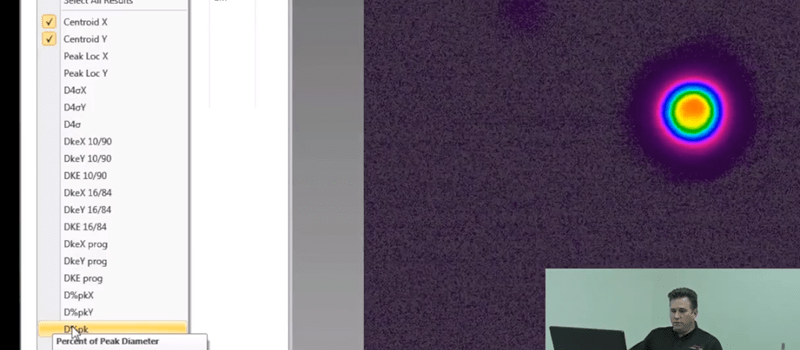



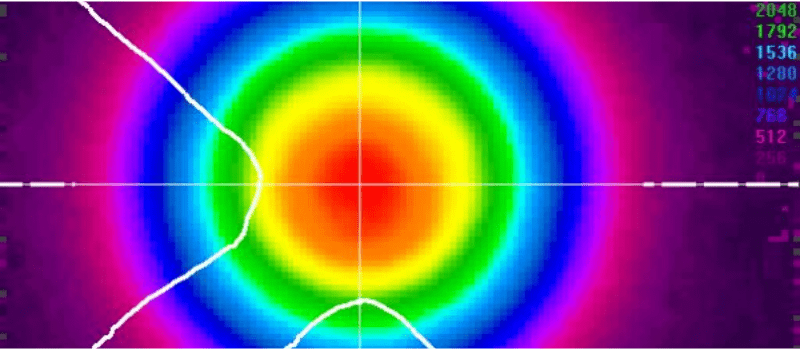
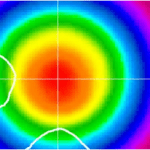

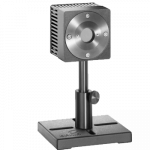
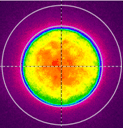
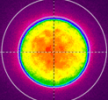
i hope to help me in laser measurements and publications
Asaad,
Thanks for your comment. What exactly would you like help with?
Best,
Effy
If you want to improve your know-how only keep visiting this site aand bee updted with the hottest information posted here.
Excellent beat ! I would like to apprentice at the same time as yoou amend
your web site, how can i subscribe for a blog web
site? The account aided mme a appropriate deal.
I were a little bit acquainted of this your brosdcast provided shiny transparent concept
very good thanks for this content
Thank you for your kind response.
We are happy to know you find our blog post relevant and efficient.
Feel free to keep sharing your thoughts with us in the future!